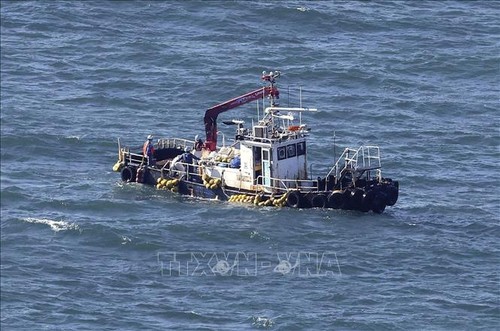 Water samples are collected near Fukushima Daiichi nuclear plant to check tritium amount after Japan discharged treated radioactive water into the sea on August 24, 2023. (Photo: Kyodo/VNA) Water samples are collected near Fukushima Daiichi nuclear plant to check tritium amount after Japan discharged treated radioactive water into the sea on August 24, 2023. (Photo: Kyodo/VNA)
|
The Fisheries Agency has provided almost daily updates since the start of the water release, in a bid to dispel harmful rumors both domestically and internationally about its environmental impact.
No tritium was detected in 64 fish, which included flounder and six other species, collected since August 8. The agency plans to examine about 180 samples by the end of next March, with the collection points expected to remain unchanged.
In March 2011, Japan suffered an earthquake and tsunami that affected the Fukushima nuclear power plant. Tokyo Electric Power Corporation (TEPCO), the operator of this plant, had to treat radioactive contamination of more than 1 million tons of wastewater during the reactor cooling process.
The wastewater has had most of the radioactive substances removed, except tritium. The remaining tritium is diluted to a ratio of 1/40, the allowable level according to Japanese safety standards, before being discharged into the Pacific Ocean through a 1 km underground pipeline from the plant.
Experts say the amount of tritium in the environment will be extremely small due to mixing with seawater.